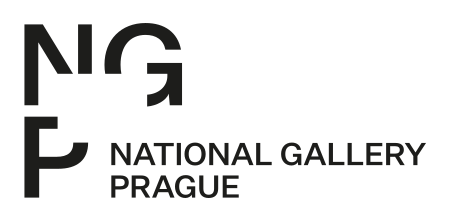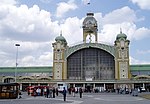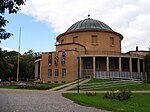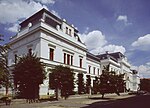National Gallery Prague

The National Gallery Prague (Czech: Národní galerie Praha, NGP), formerly the National Gallery in Prague (Národní galerie v Praze), is a state-owned art gallery in Prague, which manages the largest collection of art in the Czech Republic and presents masterpieces of Czech and international fine art in permanent and temporary exhibitions. The collections of the gallery are not housed in a single building, but are presented in a number of historic structures within the city of Prague, as well as other places. The largest of the gallery sites is the Trade Fair Palace (Veletržní Palác), which houses the National Gallery's collection of modern art. Other important exhibition spaces are located in the Convent of St Agnes of Bohemia, the Kinský Palace, the Salm Palace, the Schwarzenberg Palace, the Sternberg Palace, and the Wallenstein Riding School. Founded in 1796, it is one of the world's oldest public art galleries and one of the largest museums in Central Europe.
Excerpt from the Wikipedia article National Gallery Prague (License: CC BY-SA 3.0, Authors, Images).National Gallery Prague
Veverkova, Prague Holešovice
Geographical coordinates (GPS) Address Nearby Places Show on map
Geographical coordinates (GPS)
| Latitude | Longitude |
|---|---|
| N 50.1015 ° | E 14.4325 ° |
Address
Veletržní palác
Veverkova
170 00 Prague, Holešovice
Prague, Czechia
Open on Google Maps











